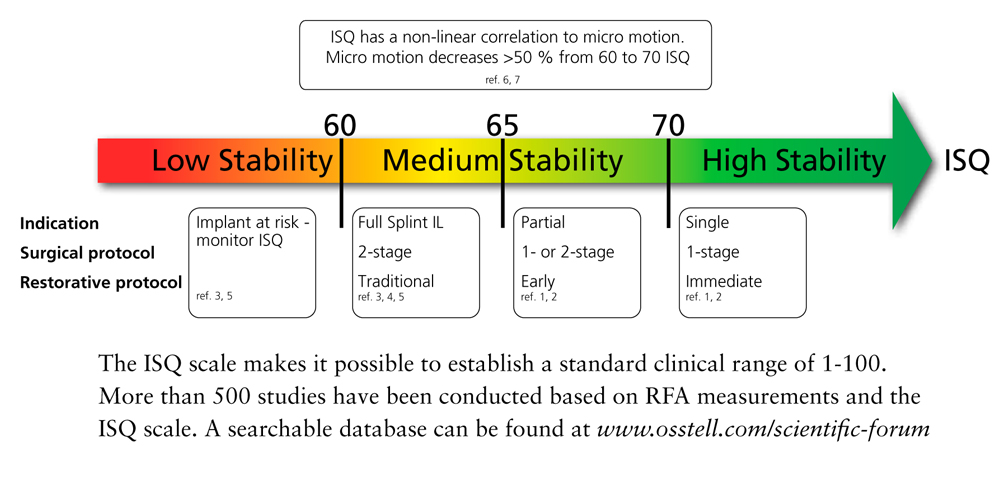Implant Stability Quotient
For forensic reasons, we recommend to keep records of the primary stability with the ISQ-value.
Instructions video: « How to use the Osstell ISQ » on VIMEO«
Stability of dental Implants over time
As a result of osseoinegration, initial mechanical stability is supplemented and/or replaced
by biological stability, and the final stability level for an implant is the sum of the two.
Stability does not generally remain constant after implant placement. For example, there
is likely to be an initial descrease in stability, followed by an increase as the implant becomes biologically stable.
Stability development
The overall average value of all implants over time is approcimately 70 ISQ.
If the initial ISQ value is hight, a small drop in stability normally levels out with time.
A big drop in stability or a continuing decrease should be taken as a warning sign.
Lower values are expected to be higher after the healing period. The opposite could
be a sign of an unsuccessful implant and actions should be considered.
Bone quality
High initial stability (ISQ values 70 and above) tends to not increase with time, even if the
high mechanical stability will decrease to be replaced by a developed biological stability.
Lower initial stability will normally with time due to the lower mechanical stability
being enforced by the bone remodeling process (osseointegration).
Values such as ISQ 55 or lower should be taken as a warning sign and actions to improve
the stability might be considered (larger implant diameter, longer healing time etc.)*
*Implant stability measurements using Resonance Frequency Analysis. Biological ans biomechanical aspects and clinical implications. Periodontology 2000, 2008. Sennerby & Meredith















